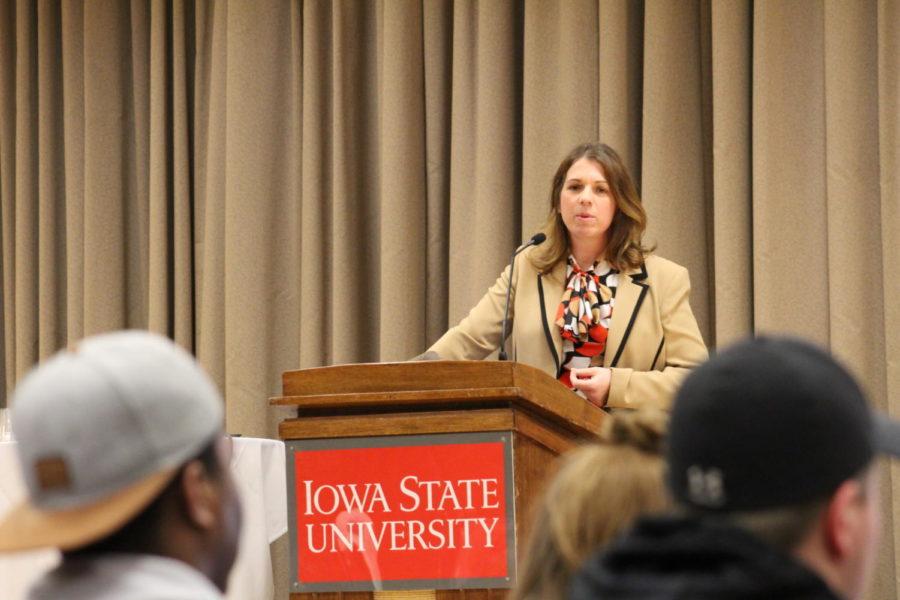Banking on Women program is working to close the banking gender gap
Jessica Schnabel, head of the Banking on Women business at the International Finance Corporation (IFC) lectures on women’s entrepreneurship and financially support of women in developing countries in the Sun Room of the Memorial Union Monday night.
February 5, 2018
There is a gap in the access women have to banking for their careers, specifically in developing countries. The Banking on Women program, under the International Finance Corporation, is working to close this gap. The International Finance Group is one of the five international organizations under the World Bank Group.
Even though one-third of registered small and medium-sized enterprises are owned by women, there is a 320-billion-dollar gap in the annual credit gap for women owners of registered small and medium-sized enterprises.
Jessica Schnabel, the global head of Banking on Women, discussed Monday how the business has worked in 34 different countries, with a stated intent to close this gap and increase shared prosperity.
Working with financial institutions all over the world, the Banking on Women business provides financial services and support to women entrepreneurs.
“We invest in private sector companies, we provide expertise to increase their development outcomes and we mobilize investment,” Schnabel said.
As of June 2016, Banking on Women has invested $1.13 billion in investment services and advisory service in countries with extreme poverty such as Chile, Brazil, Russia, Indonesia and many others.
There are many factors that cause this disparity. One factor is that women entrepreneurs are seen as “high risk” by banks. This is caused by the implicit biases held by bankers.
”What we have found in the Banking on Women business that women customers are very profitable by banks, banks can make a ton of money by banking women customers,” Schnabel said. “We put our money where our mouth is and we make money doing it.”
Schnabel said this gap is also caused by business practices and regulatory environments that restrict women business owners. Some of these regulations in countries inhibit women to own property or land and that property, in turn, would have served as collateral for loans.
In a report done by the International Financial Group titled “Women, Business and the Law,” they examined the legal barriers limiting women’s economic participation in 173 economies. Out of these 173, 155 of these economies have at least one law that prohibits women’s economic growth. In 100 of these, women face job restrictions.
Despite the work of companies globally, the World Economic Forum’s Global Gender Gap report found that “the most challenging gender gaps remain in the economic and health spheres. Given the continued widening of the economic gender gap, it will now not be closed for another 217 years.”
IFC and the Women in Banking program are working close this gap at a faster rate. In 2016, the IFC reported that they impacted the employment of 747,375 women; 29 percent of the IFC’s nominations for board positions were women and 272,192 of small and medium enterprise business loans were made to woman-owned businesses.
Schnabel concluded there are ways universities can support women as the next emerging market. This includes understanding and discussing unconscious biases and researching and analyzing the constraints for women as leaders, employees and business owners in many sectors, in many countries.
“I do believe that women are the next emerging market, I believe they are a key source of growth and change for countries,” Schnabel said. “I hope that as you go out into your work, you will consider how you can include everyone in the solutions you are providing for tomorrow.”







